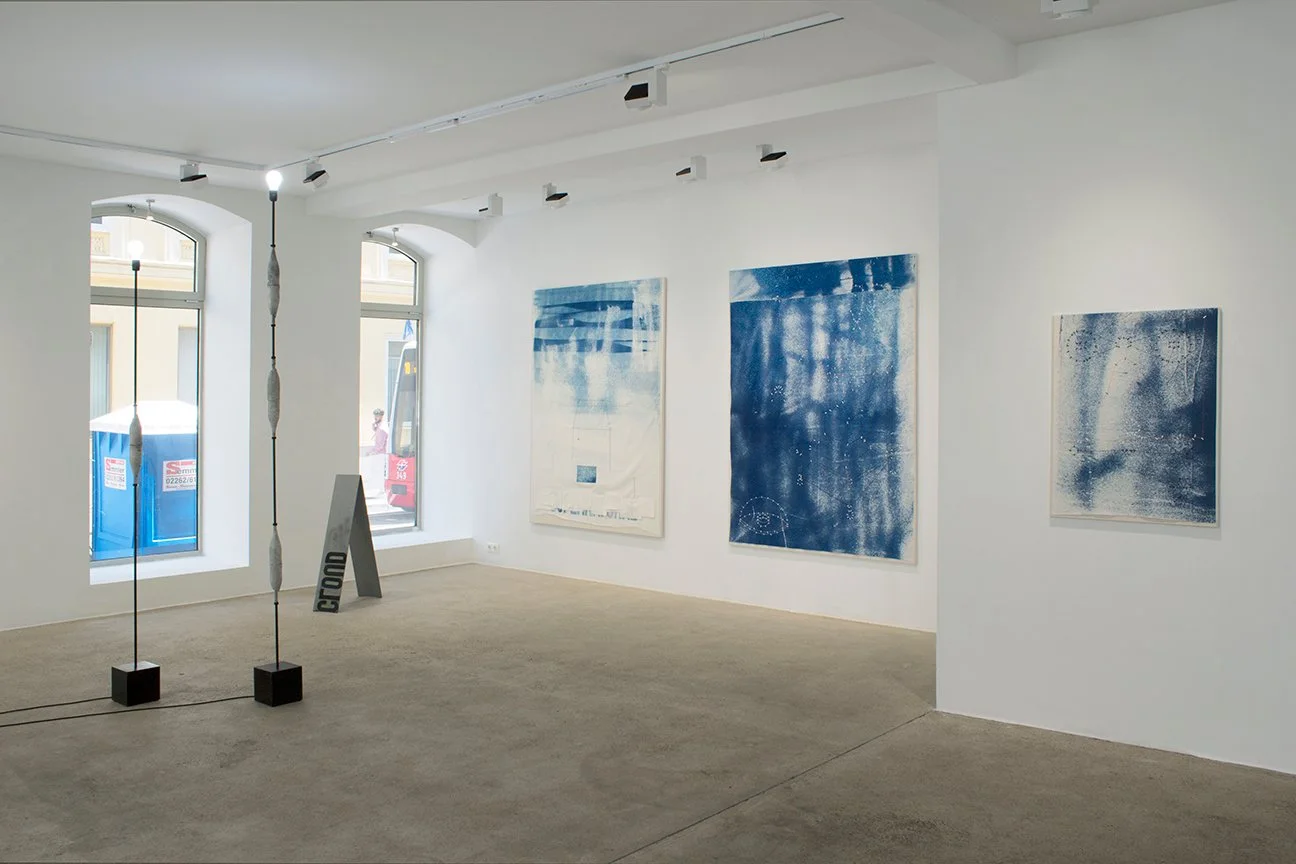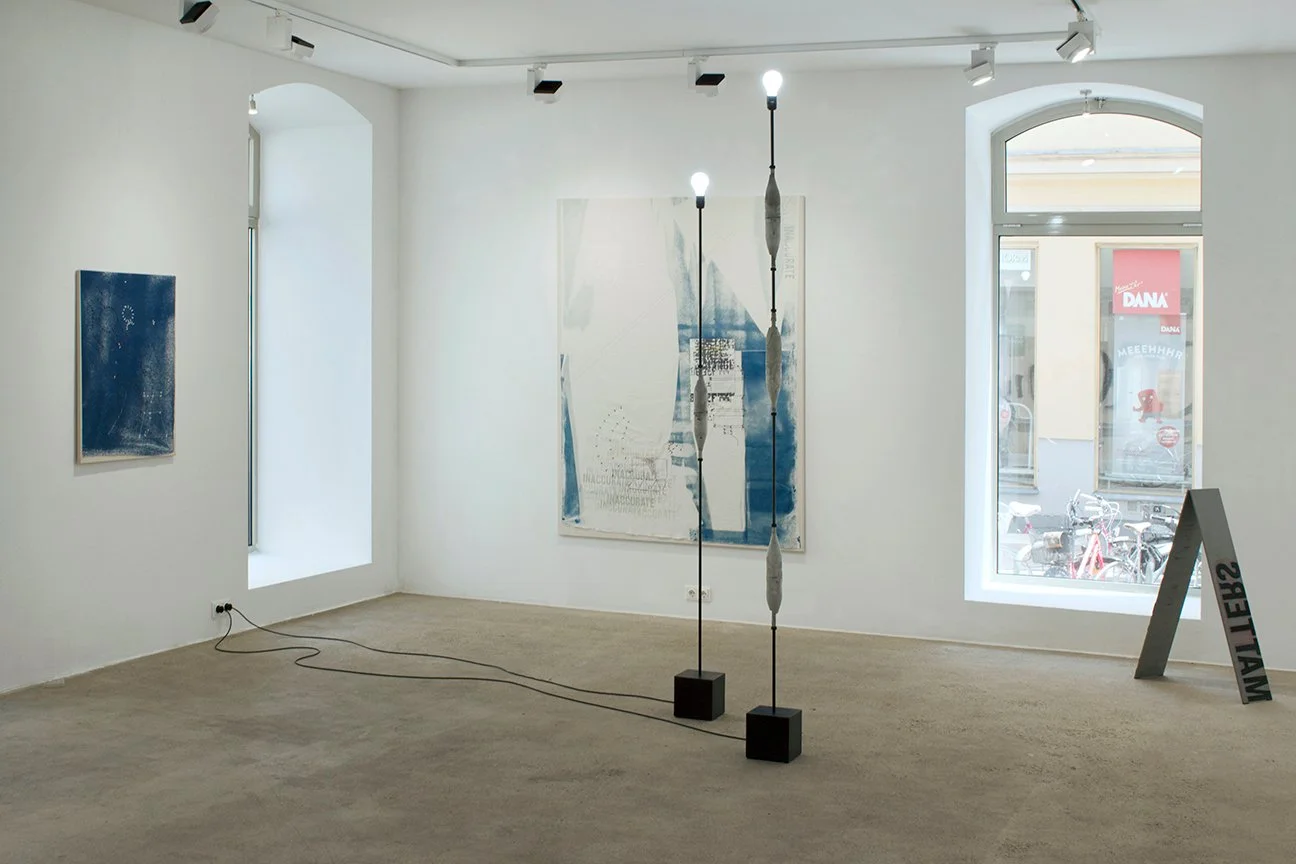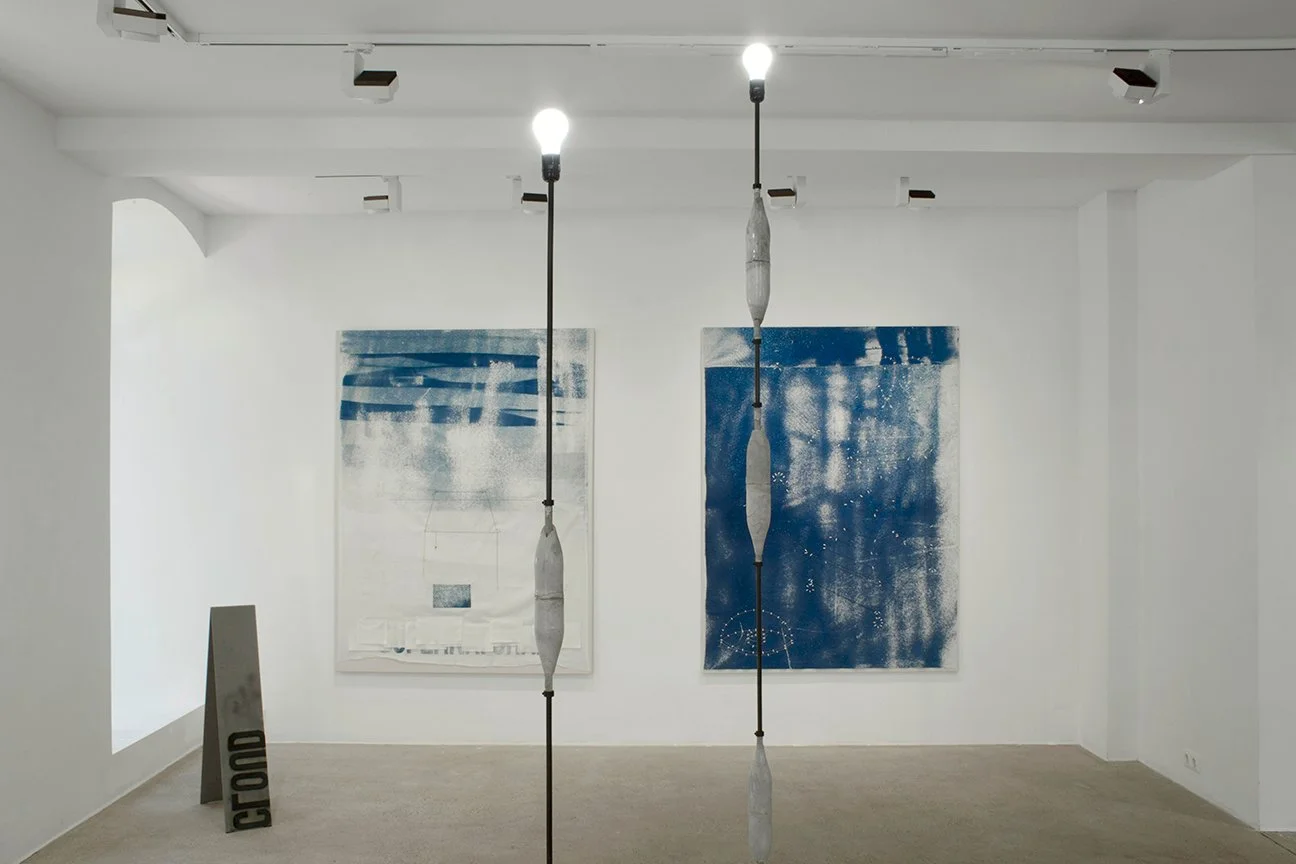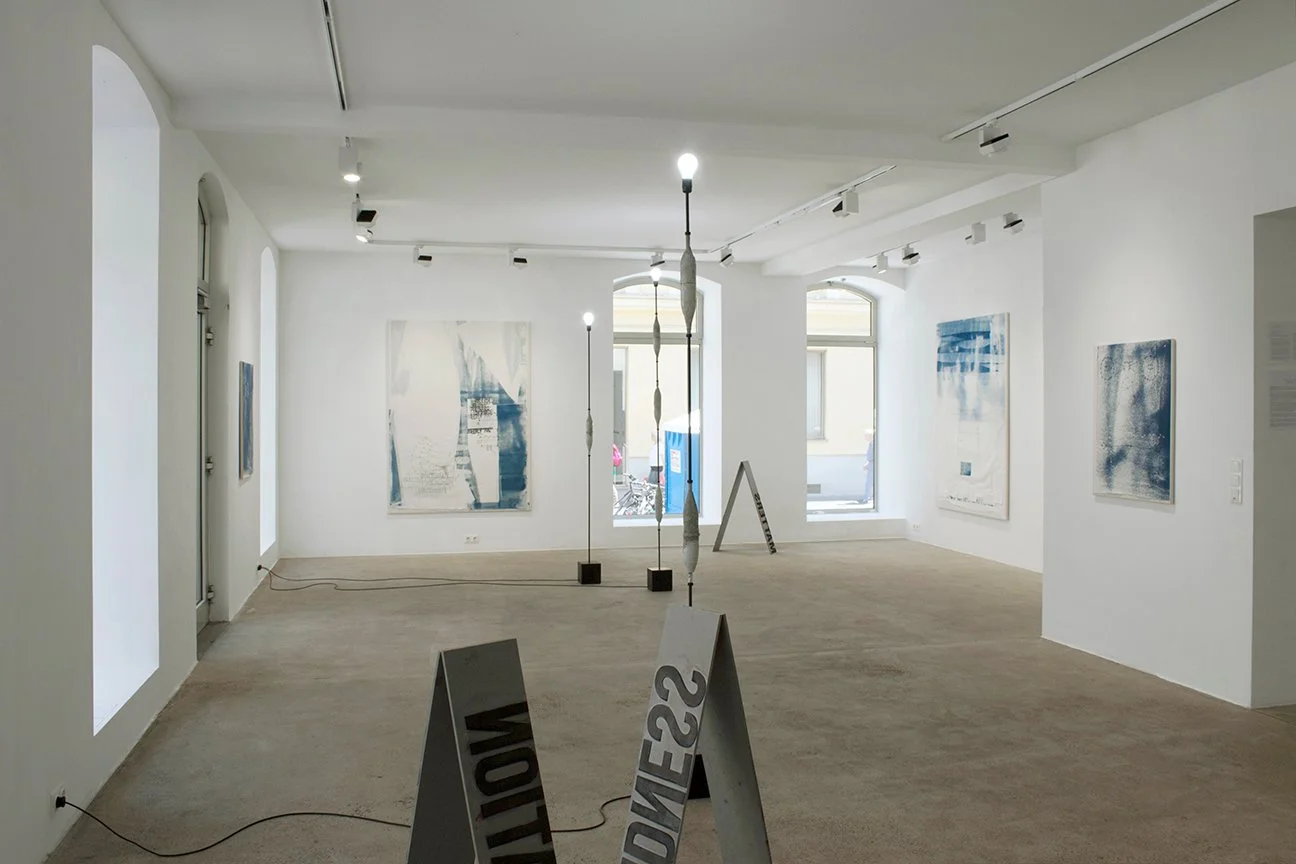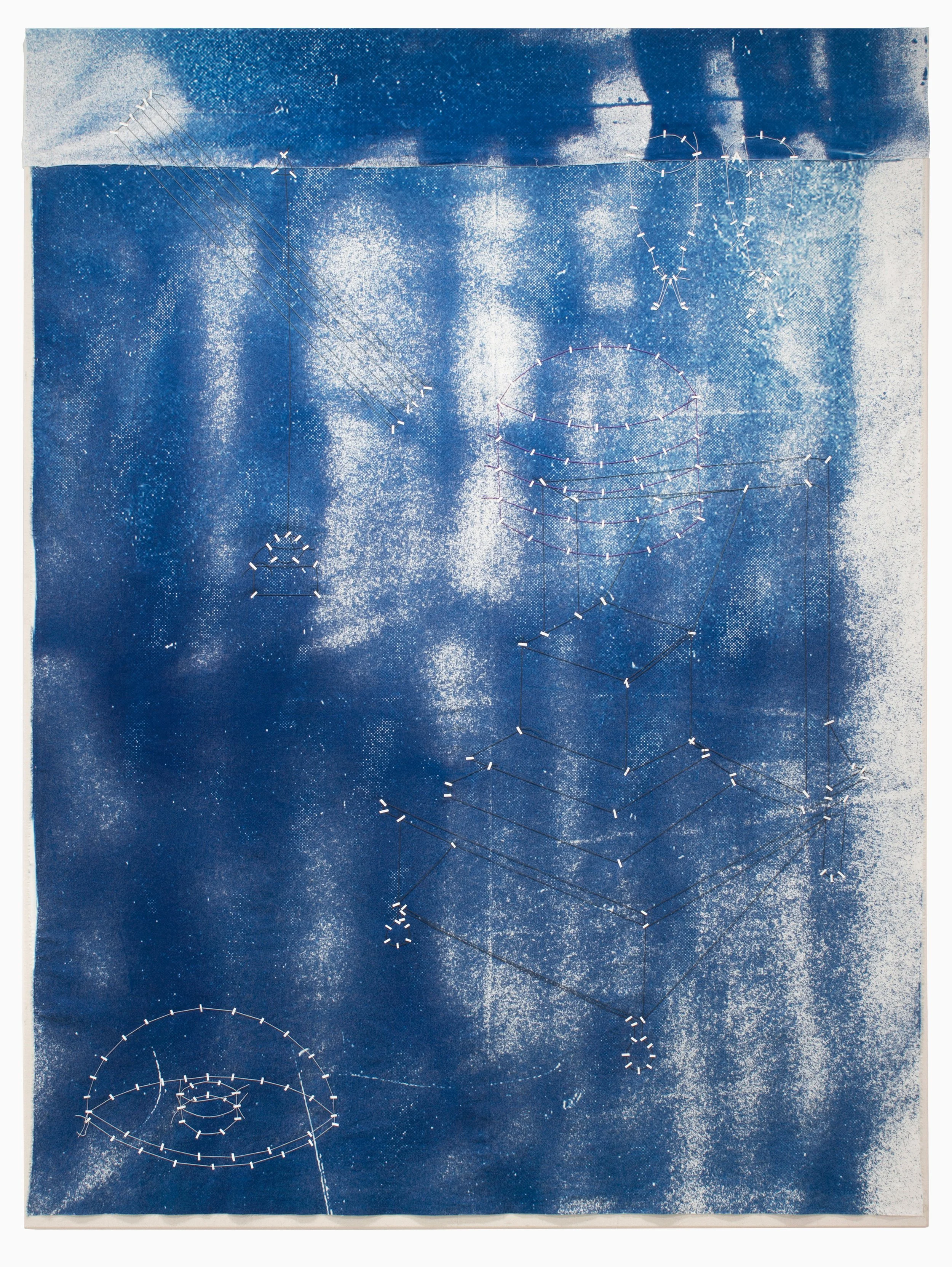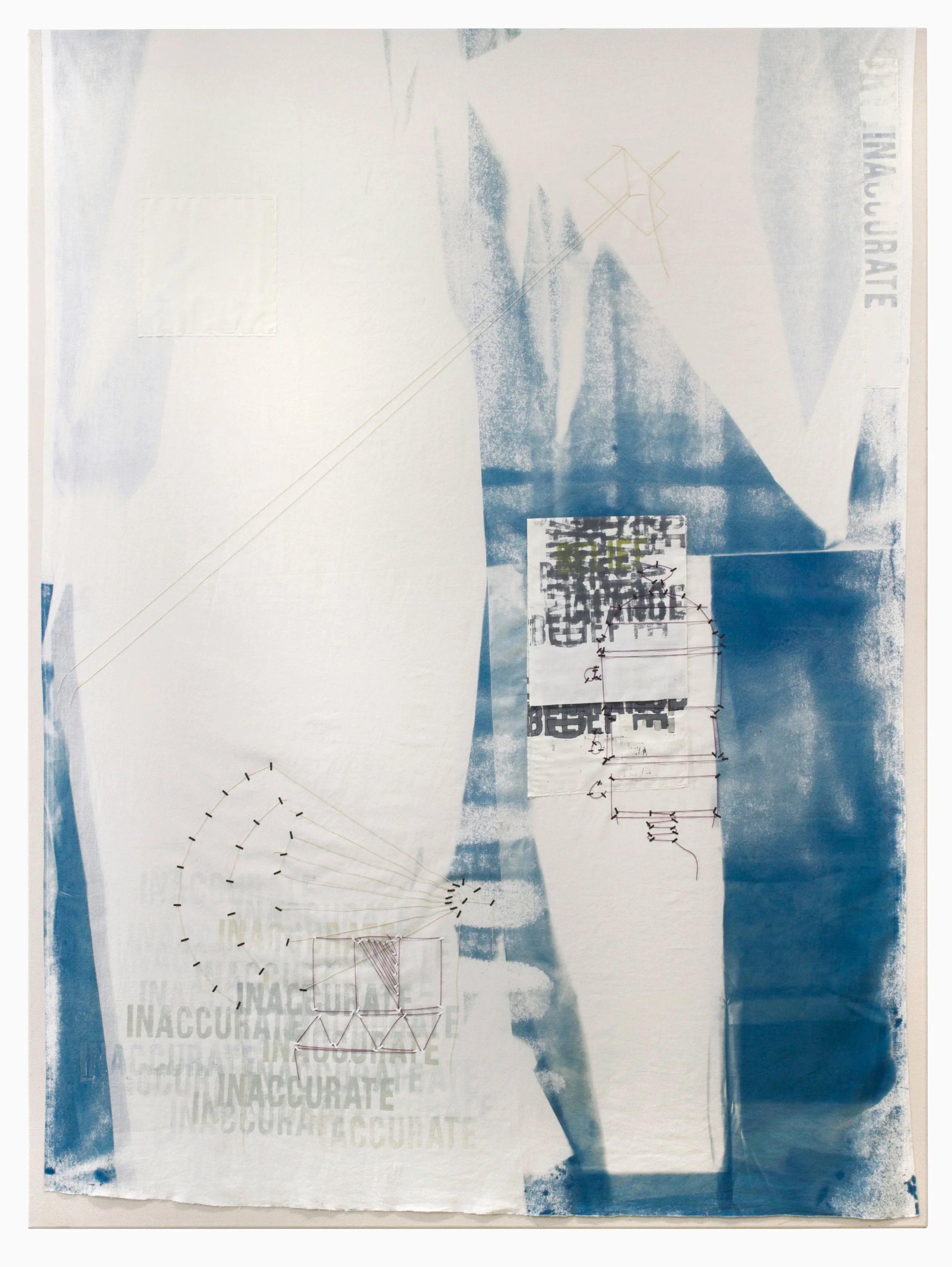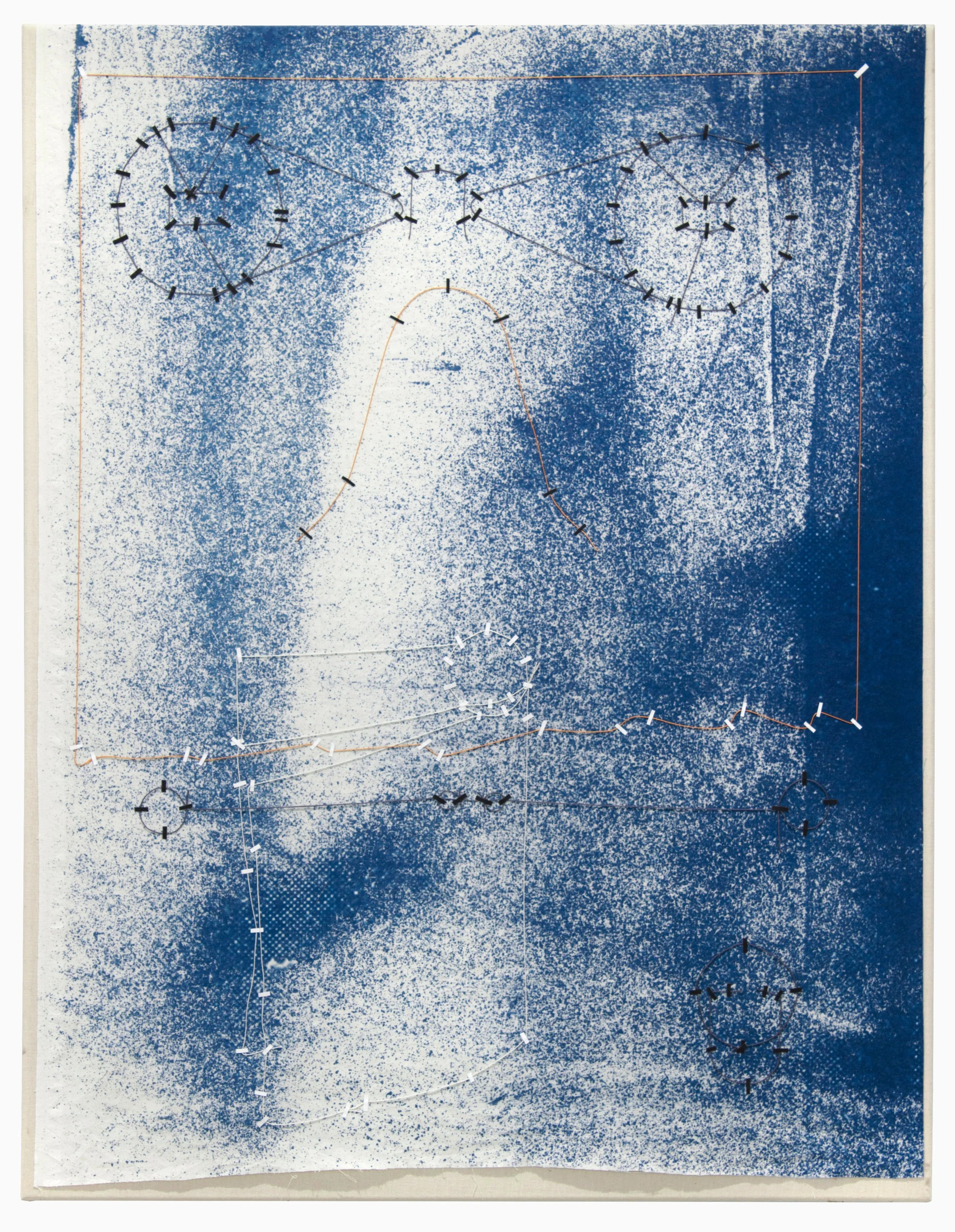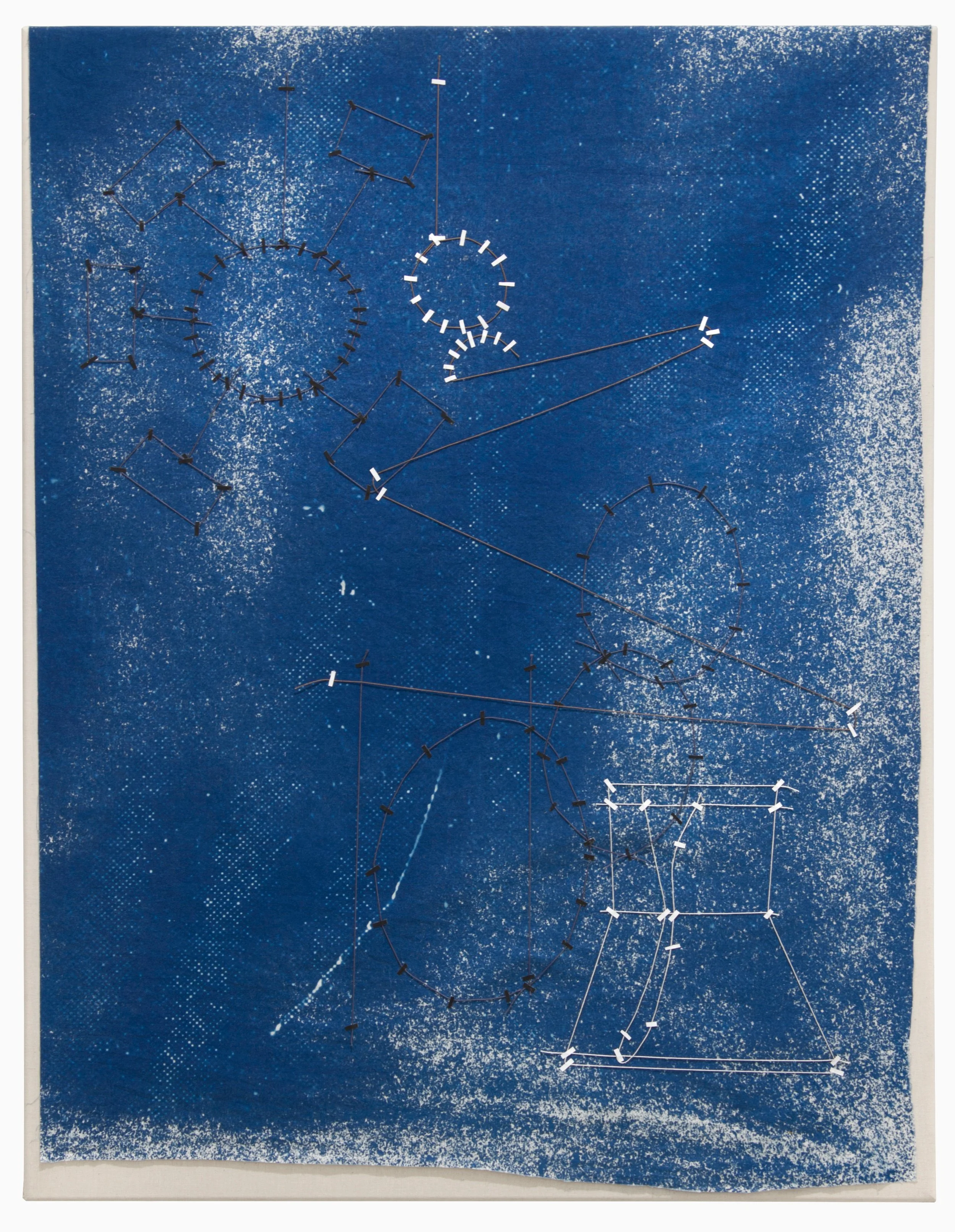The Things We Attend To Exhibition views, 2025
Supernatural Cyanotype on fabric, yarn, on canvas 150x200x2 cm
4 Moving Objects Cyanotype on fabric, yarn, on canvas 150x200x2 cm
Inaccurate Cyanotype on fabric, yarn, on canvas 150x200x2 cm
Principle of Coverage I, II, III Cyanotype on fabric, yarn, on canvas 90x125x2 cm
Ruse Cyanotype on fabric, yarn, on canvas 70x90x2 cm
Phantom Vanish Cyanotype on fabric, yarn, on canvas 70x90x2 cm
What draws our attention - and what slips past unnoticed? The things we attend to traces the delicate interplay between perception, illusion and the mental, societal, and technical constructions that guide our attention and shape our experience of the world.
Magic, whether on stage or in the structures of belief and perception, is not mere trickery. It is a precise choreography of the mind - manipulating attention, memory, and meaning.
Magicians exploit the brain’s shortcuts and blind spots to craft convincing illusions. Our perception is selective, our memories are reconstructed, and our awareness is shaped more by focus than by fact. In this sense, magic becomes a lens through which to examine our susceptibility - not just in performance, but in politics, media and everyday life.
Layered cyanotype prints on fabric draw on Hippolyte Baraduc’s 19th century photographs of the soul’s emanations in “the light of the human soul”. These ghostly impressions are further abstracted through chemical irregularities, masked exposures and the folding and layering of materials. Overlaid lines of yarn and tape echo the aesthetics of technical drawings - diagrams of magical apparatuses and tools of illusion. They hint at concealed mechanisms behind what appears natural or supernatural, reminding us that every effect has its hidden method. As magician Randal noted “misdirection is a principal element in the art of deception”.
